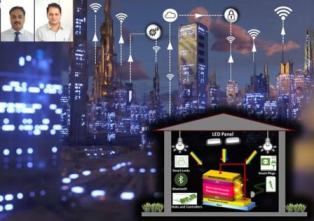
A research team from Indian Institute of Technology (IIT) Mandi has developed a new photovoltaic material which can generate electric power when irradiated with light produced in household lights like LED or CFL.
The findings of the research have been published in the journal Solar Energy in a paper authored jointly by Dr. Ranbir Singh- a fellow of Ramanujam Faculty along with Prof. Satinder Kumar Sharma of school of computing & electrical engineering (Both from IIT Mandi, Dr. Vikrant Sharma of National Institute of Solar Energy (NISE) Gurugram, Dr. Vivek Kumar Shukla from Gautam Buddha University, Greater Noida and Mritunjaya Parashar from the University of North Texas.
The research can be quite useful since power is used in many gadgets and appliances which require real time data and for running independently they depend on electric grids for power supply and exhaustible expensive batteries, which are not eco friendly.
The research team has developed a thin-film, efficient photovoltaic cells which can generate power from light. The cells are based on perovskites – a family of crystals that can absorb sunlight and generate power. Perovskites have been studied for a long time for solar power generation. The team of researchers have explored new perovskite materials that can be used to harness indoor artificial light.
Telling about the findings of the research Dr Ranbir Singh of IIT Mandi said, “We have synthesized a photoactive quasi-cubic structured perovskite material by incorporating Formamidinium (FA+) in Methyl ammonium Lead Iodide (MAPbI3) perovskite material.”
He said, “The light absorption, morphology, charge transport and electron trap status of the perovskites were examined and the device fixed under indoor lighting conditions has been explored in detail. The fabricated PVs demonstrated a photoelectric conversion efficiency of 34.07% within indoor illumination conditions”, he added.
Light-induced power generators can be promising alternatives to batteries for powering such devices. Solar cells use the light from the sun to produce power, but since many of the IoT are used indoors, solar light is not an option. An alternative is to find methods to harness light from indoor lighting sources to generate enough power to run indoor devices such as sensors, gadgets, Wi-Fi routers, RFID readers, etc.
